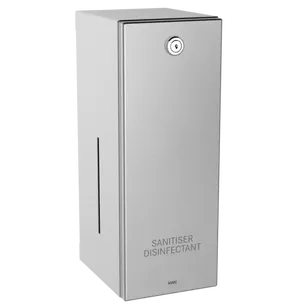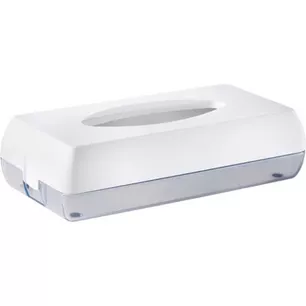Trash can liners guide


Choosing the right trash bags may not be as important as choosing a car, but if you run a business that generates a lot of waste, it's worth spending a moment on this to avoid picking up trash from the floor later. Suitable bags not only improve work ergonomics but also save money and have eco-friendly aspects. In places with high hygiene standards, appropriate bags help control risks associated with the spread of bacteria.
Differences between HDPE and LDPE bags
Trash bags are most commonly made from polyethylene of different densities. HDPE material is high-density polyethylene, and bags made from it are thin and quite tear-resistant but not very stretchable. On the other hand, LDPE material is low-density polyethylene, and LDPE trash bags are thicker and highly stretchable, making them more tear-resistant even against sharp objects.
HDPE bags are better suited for bathrooms, where the waste isn't very heavy, especially for paper towel bins. Generally, they are recommended for places where the waste is not very heavy and does not include sharp objects. LDPE bags are perfect for kitchens, where even a partially filled bag of waste can be very heavy. Additionally, in kitchens, besides food scraps, other items that can damage a thin bag are also discarded.
What to consider when choosing trash bags?
What weight will the bags need to hold?
As mentioned earlier, LDPE bags are much stronger than HDPE bags, so they are recommended for places where the waste tends to be heavy, such as kitchens or industrial facilities.
What type of waste will be thrown away?
The basic issue is whether the waste will include sharp-edged items; if so, you must buy LDPE bags. For sanitary bins, where hygienic or laboratory waste is discarded, manufacturers often offer dedicated bags with a specific capacity, shape, and special closure, such as zip locks.
What is the capacity of the bin?
The capacity of the bag should be as close as possible to the capacity of the bin in which the bag is placed. Otherwise, either the bags are not used efficiently because the bin overflows, or we miss out on the opportunity to take out the trash less frequently because we don't have a large enough bag.
Where are the bins located, and what path do the bags take before being disposed of?
In places like hotels, restaurants, and other establishments focused on guest comfort, it's important that guests are exposed to the sight of trash as little as possible. Therefore, the timing and manner of trash disposal in such places are clearly defined to ensure guests do not see it. Obviously, this is not always possible, so the basic rule is to use black and strong bags to ensure the waste is not visible and the bag does not tear under any circumstances.
Do we sort the waste or not?
Not everywhere is precise waste segregation required, so there doesn't always have to be four bins next to each other, each for a different type of waste. However, in places where we know that, for example, only papers or only plastic bottles will be thrown away, it's worth getting colored bags that help the cleaning staff correctly segregate the waste.
All rights reserved. No part of this publication (text, graphics, images, photos, files, and other data) presented on the OLE.PL online store may be reproduced or distributed in any form or by any means without prior permission. All trademarks, graphic marks, brand names, and other data are protected by copyright and belong to their respective owners.
















































































 Polski
Polski
 Czech
Czech
 German
German
 Spanish
Spanish
 Slovak
Slovak